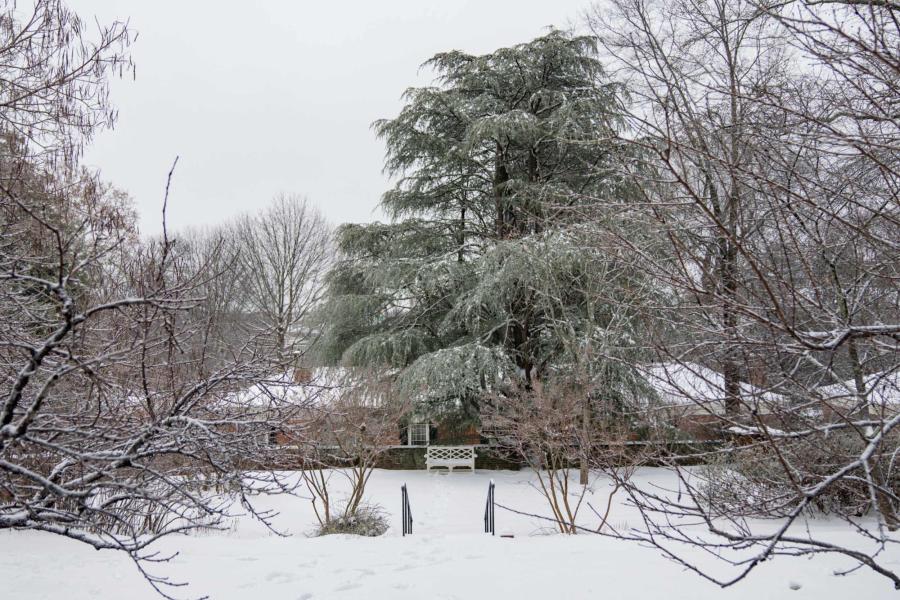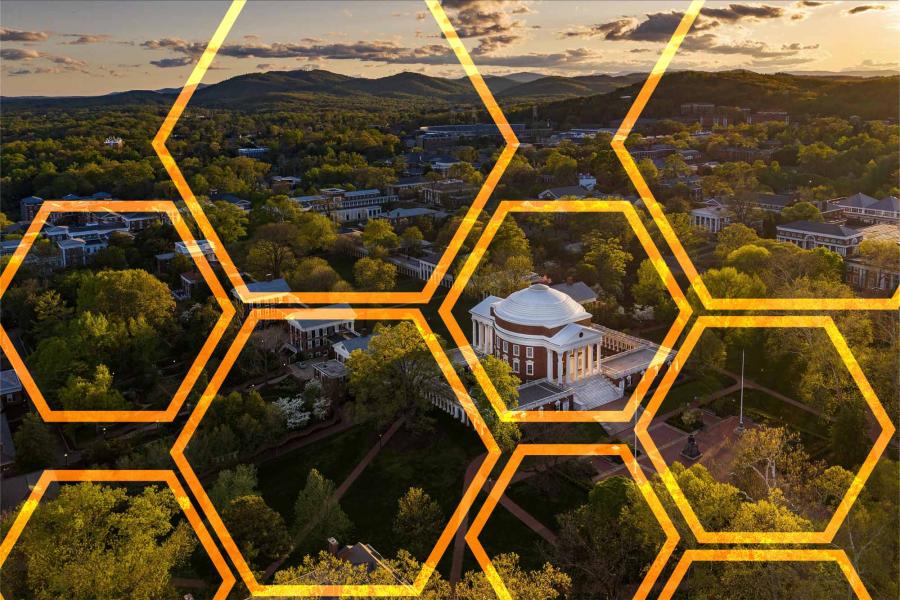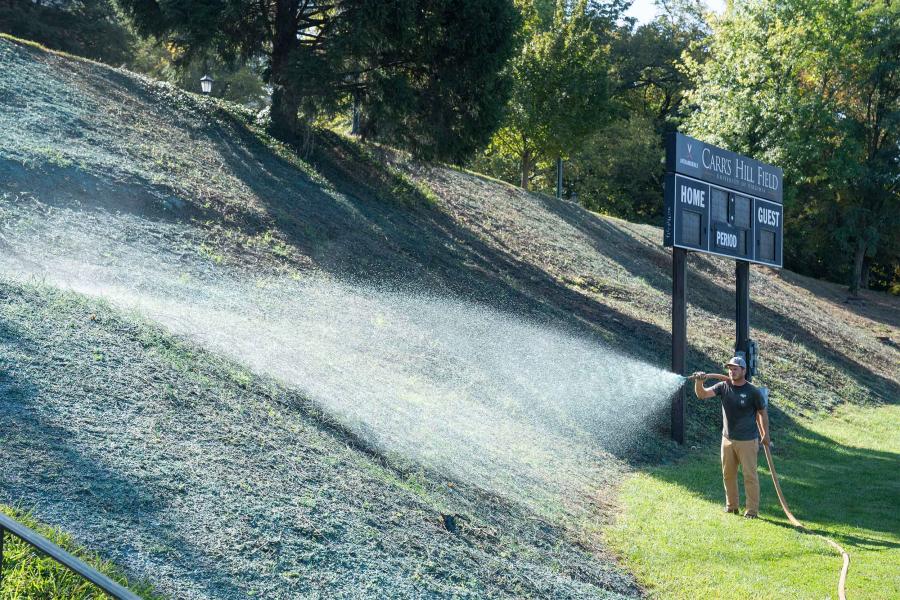It may be a historic UNESCO World Heritage Site, but deep in its roots, the Lawn is still a lawn.
With an estimated 16,000 visitors expected to attend each day of the University of Virginia’s Finals Weekend, May 17 and 18, the Lawn’s keepers worry about the impact of heavy foot traffic on the turf’s health.
“Grass is quite challenging to grow in Central Virginia due to our red clay soil, which presents drainage and compaction issues,” Travis Mawyer, landscape manager with UVA Facilities Management, said. “We are right in the middle of the transition zone between warm-season grasses and cool-season grasses. Both will grow here, but neither thrives, and both present challenges and have their own set of pros and cons.”
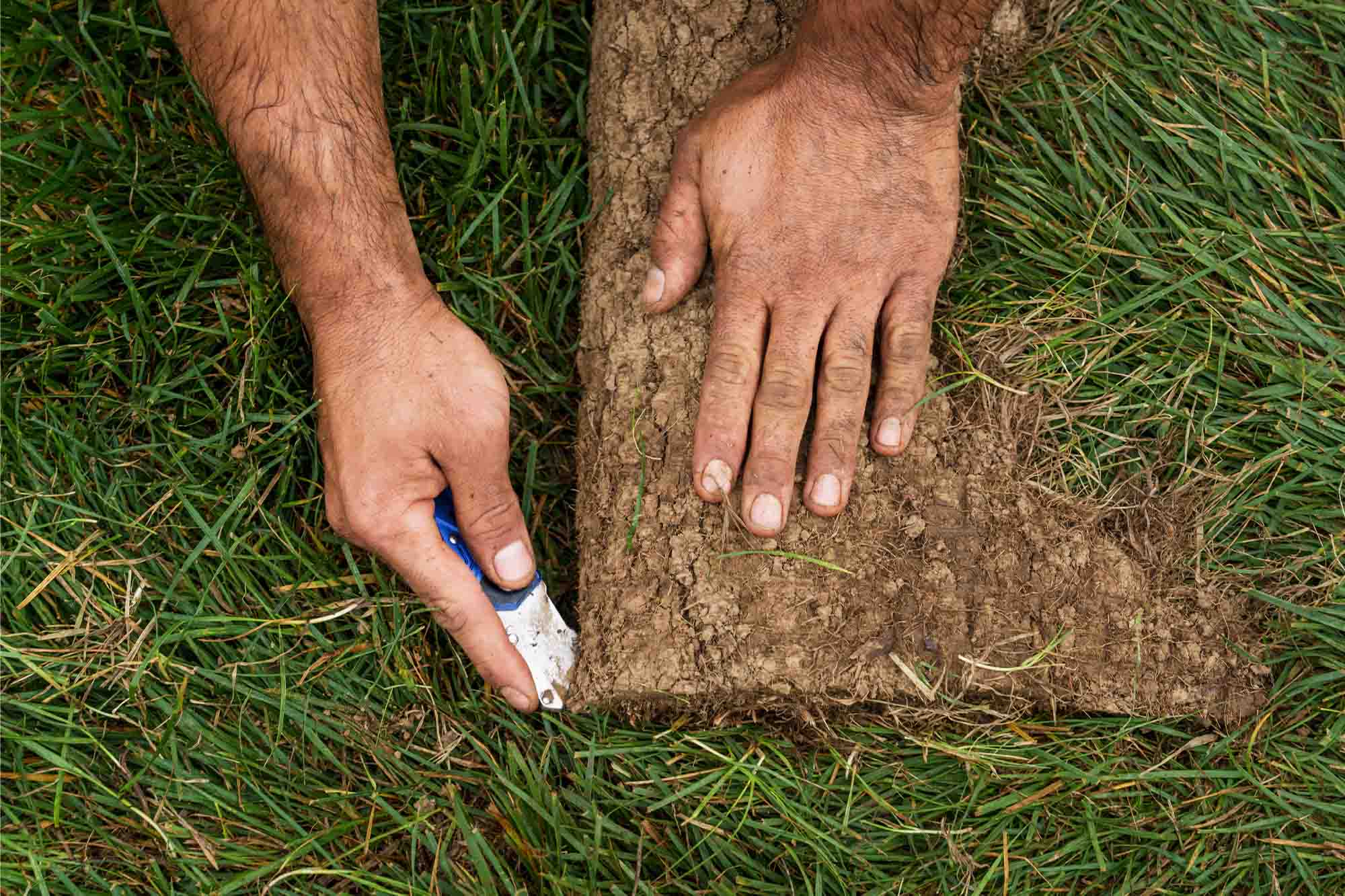
Aaron Motto of Ridgeline Turf cuts a piece of sod as he lays it into the Lawn during Facilities Management’s preparation for Finals Weekend. UVA Facilities Management workers seed most of the Lawn with a variety of grasses. (Photo by Lathan Goumas, University Communications)
Landscapers have hedged their bets, seeding a variety of grass species, including fescue and rye.
“We typically have a blend of fescue, rye and Bermuda on the Lawn,” Mawyer said. “We fertilize to promote root growth, top growth and a deep green color. We fertilize in strict adherence to our nutrient management plan, which requires soil samples be taken and to only provide the nutrients that the soil samples show we are deficient in.”
The grounds crew uses minimal amounts of herbicide, allowing for a blend of other plant species to mix in with the grasses.
“We now have initiatives to support our designation as a ‘Bee Grounds,’ so we are actively allowing more of the flowering species to blend in, such as clover and dandelion,” Mawyer said.
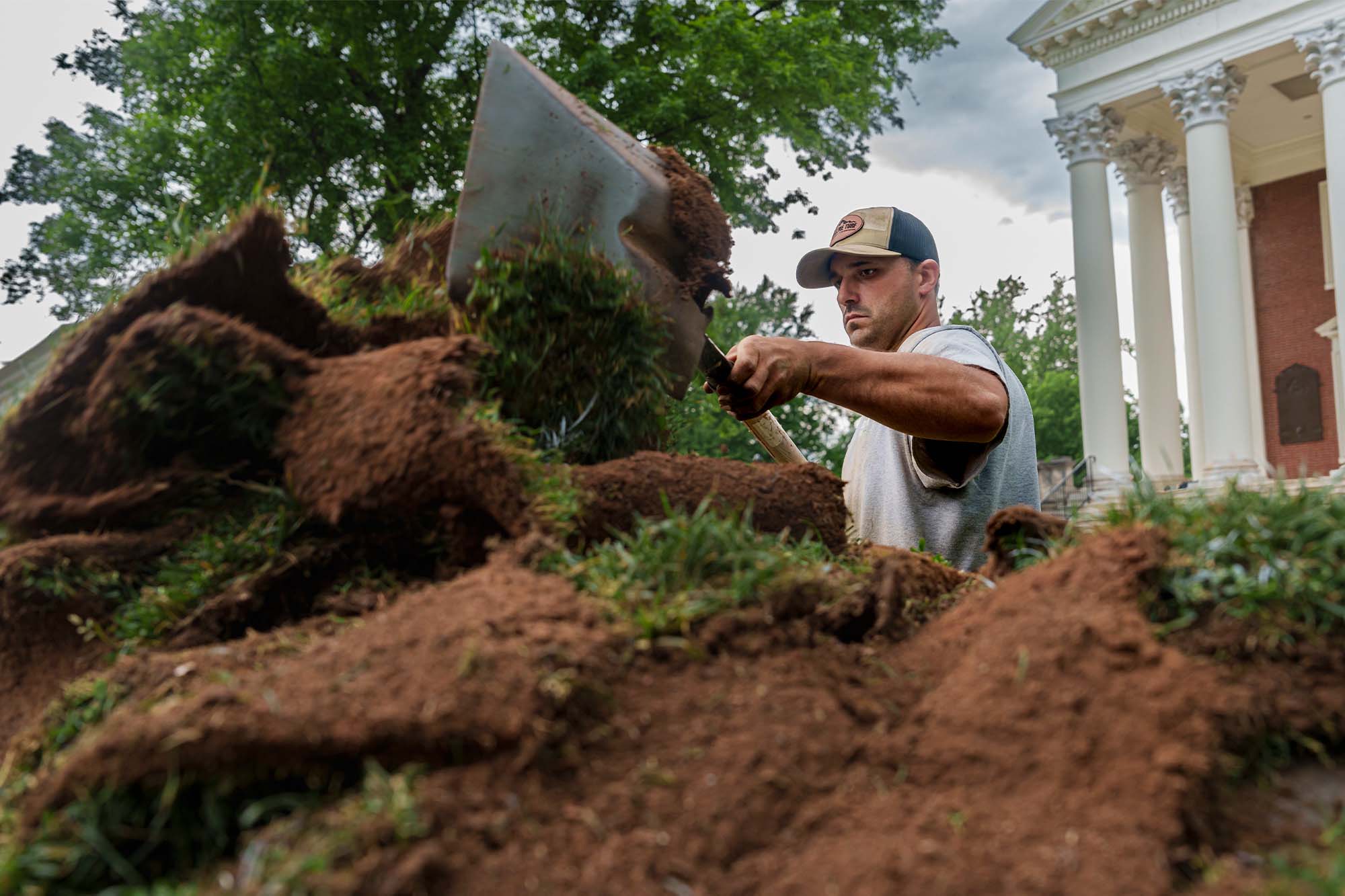
Motto shovels up sod as he helps prepare the Lawn for Finals Weekend. The greensward will host three major events in three days. (Photo by Lathan Goumas, University Communications)
The landscapers typically mow the Lawn every seven to 10 days, depending on weather, to maintain a grass height of 3.5 inches.
“Slightly taller grass blades hold up better to foot traffic, compaction and the general wear and tear of an active space,” Mawyer said. “It will also perform better in high heat and drought-like conditions if left slightly taller.”
For Final Exercises, mowing is coordinated with the setup of chairs, fences, ramps, rope, aisles and stages.
“We try to get one last full mow in just before any setup begins,” Mawyer said. “We follow up with a spot mow, where we can, in between all the setup, on Wednesday or Thursday before any official activities begin.”
With warm weather, landscapers also prepare for many outdoor events.
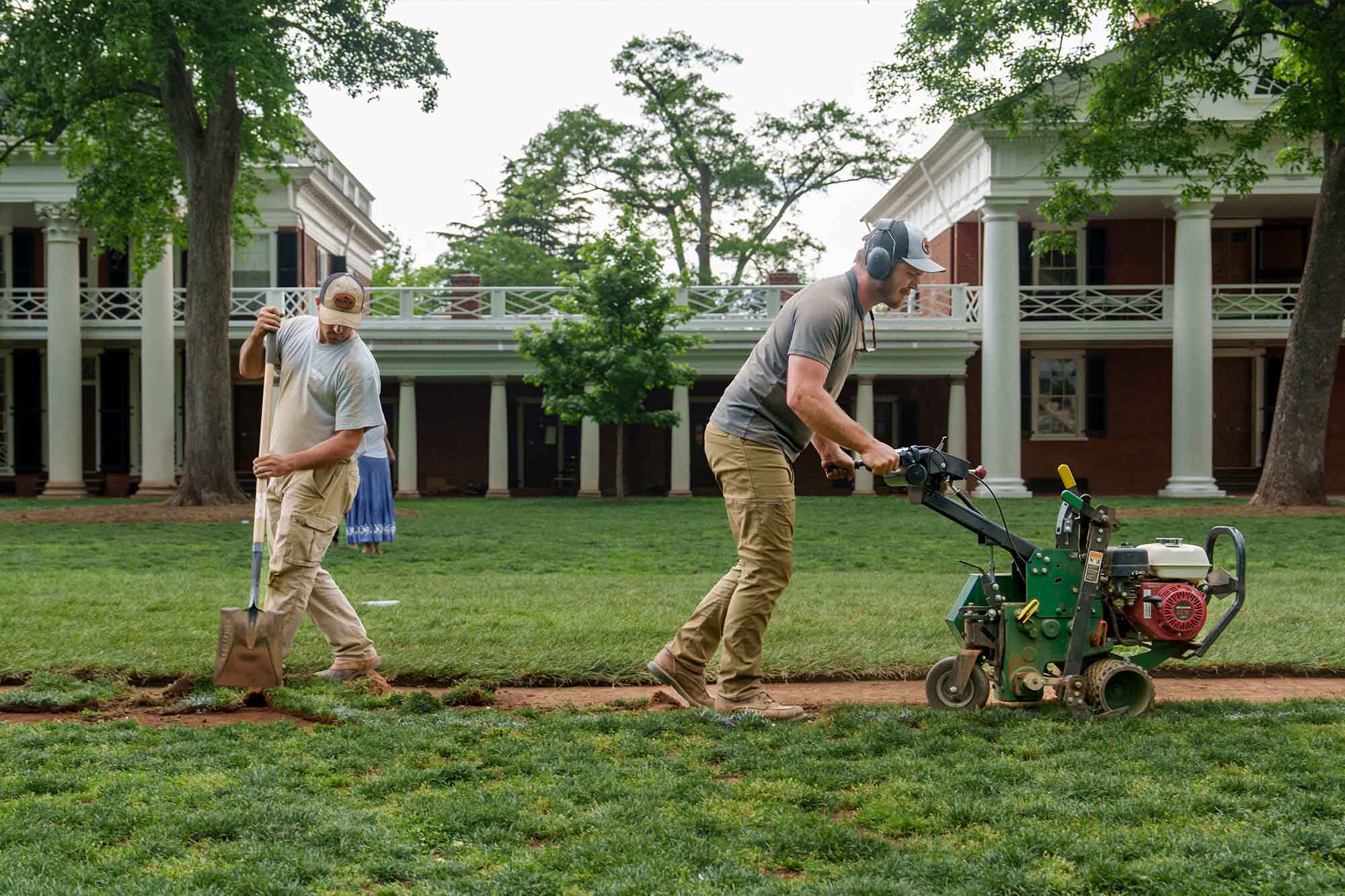
Motto, left, and Leitzel lay sod on the Lawn in preparation for Finals. The University anticipates the Lawn will draw more than 16,000 visitors per day for graduation. (Photo by Lathan Goumas, University Communications)
“Events and tours take place on various, but scheduled and specific, dates all over Grounds, so we are busy prepping for the aesthetics, curb appeal, hardscape cleanliness and such in regard to beautiful and well-maintained outdoor spaces,” Mawyer said.
Landscapers pull weeds, add fresh mulch to beds and prune boxwoods and other plantings on the Lawn and at the Rotunda for aesthetics and sightlines.
“Hardscapes such as steps, walks, ramps, and curbs are meticulously cleaned with rakes and brooms,” Mawyer said. “The large magnolia over the George Washington statue and the American holly over the Thomas Jefferson statue, being evergreen trees, actually shed a large number of older leaves in the spring, and this requires quite a bit of leaf removal and cleanup outside the normal time frame of fall leaf cleanup.”
They also prune dead and damaged tree limbs.
“With all the people on the Lawn sitting under and enjoying the shade of our majestic trees, they need to be prepped for safety,” Mawyer said. “This effort took a few weeks near the end of April and early May, since we need the trees to leaf out to really determine which limbs to remove. A broken, ‘hanger’ limb damaged by storms is obvious, but some dieback goes unseen until they leaf out.”








